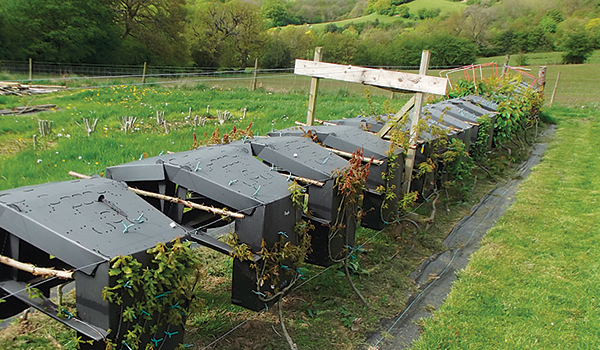
British furniture designer Gavin Munro has studied the process of controlled tree growth and the behavior of groves of pruned trees (“coppices” in British English), and has taken it all several steps further. In a 2-1⁄2-acre field in Derbyshire, England, he planted around 3,000 young trees. After eight years working on guided growth, he plans a harvest in 2016 of ready-grown furniture.
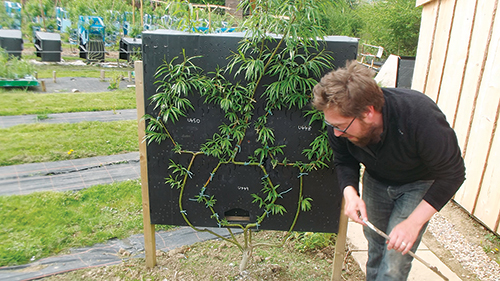
You might call it “creative arboriculture” or maybe “living sculpture.” The art involves guiding young tree development using cables or frameworks and using precise techniques of pruning and grafting.
What could be seen as eccentric is, in fact, detailed and documented experimentation. Gavin is supported by the European Union’s Climate KIC, which subsidizes new sustainable businesses that could reduce carbon emissions in manufacturing. This green aspect is one of Gavin Munro’s greatest motivations. He is keen to share his research: If big companies take it up as a viable production method, then the environment will benefit and, he feels, this alone would be a success. The energy used in transport and manufacture could be reduced massively.
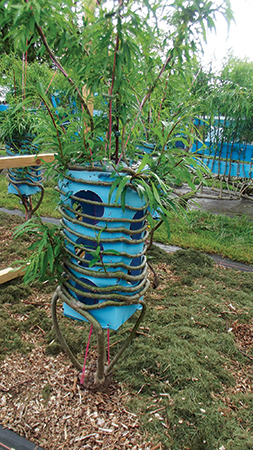
As his reputation spread, his order book filled. Everything growing is, in theory, sold. He also receives commission inquiries. Interestingly, a popular request is coffins for green funerals. The main product is chairs, then various shapes and sizes of earthy lampshades, then a greater challenge: tables.
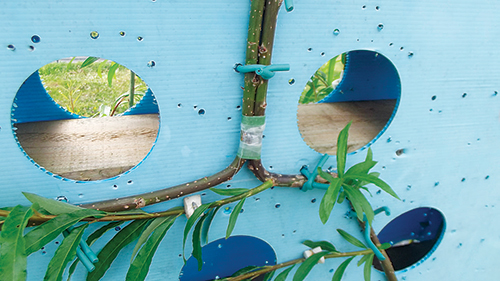
Although a work in progress, his display of flourishing, organically fed and sculpted young ash, sycamore, hazel, sessile oak, red oak, crab apple, willow and wild cherry already looks like stunning one-off art pieces.
How They Grow
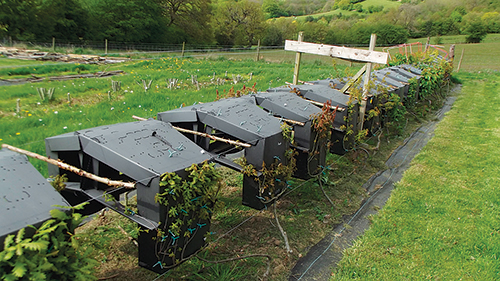
Early on in this project, Gavin observed that chairs are best grown upside-down. While it might seem logical to start with a sapling for each leg, it is not so. Trees grow outwards, so they adapt comfortably to spreading and being formed into chair legs. As Gavin puts it, “You have to learn to think like a tree” by watching what it does. New shoots are soft, vegetable-like and non-fibrous. They can be radically bent and, if suitably supported, as the tree matures that is the shape the new wood acquires.
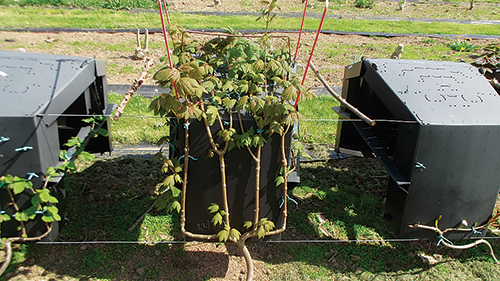
When the first two healthy shoots grow from a mother root, the chair maker eases them horizontally in opposite directions, creating the chair back’s top rail. As they proceed, vertical shoots sprout. These mature to become back spindles after the maker selectively prunes them down to three or four — whatever works visually. As the outer top rail gains sufficient length (i.e., the width of the chair back), the shoots are bent upwards to push towards the light and form the chair’s back legs, while lateral shoots are trained to begin the growth of the seat.
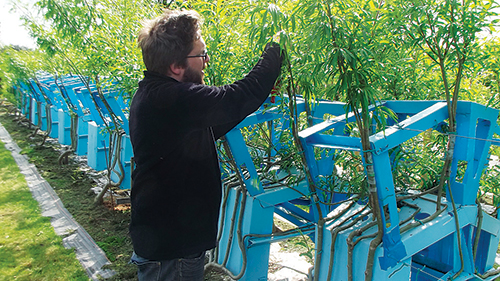
Gavin has developed a reusable framing box system created from thin cellular plastic sheeting used for signboards, which he has assembled into a chair-shaped mold with sequences of holes to attach the shoots using rubberized ties. The molds are secured in long rows to horizontal fence wires.
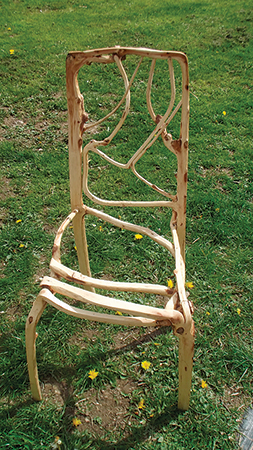
As growth proceeds, they begin grafting. New shoots grafted laterally create cross members, and the structural value of joinery framing is ready-grown. Where two or more twigs grow parallel, a careful hand fashions a lengthwise cut and binds them together to create a natural lamination. Gavin proudly showed me a couple of twigs grafted together lengthwise over two seasons. Woodworkers know that laminating timber in the workshop produces greater strength. In addition, the natural fibrous strength of a stick is stronger than similar sized timber with a cut grain. Combining these two factors creates a slender, strong chair leg and an interesting material, which in itself is a useful benefit of these experiments.
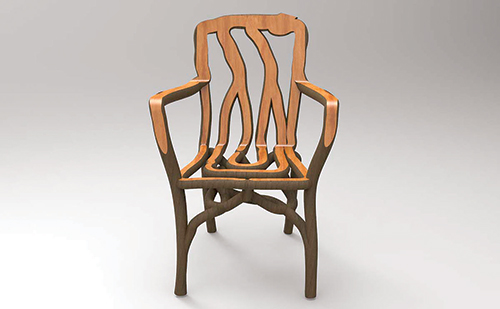
Gavin has tried finishing the harvested goods with planers and sanders, or the grinder-mounted Arbotech shaping tool, but he is more inclined to the use of drawknives of various shapes and sizes to stay as green as possible. I will look on with interest to next spring when he begins harvesting the full-grown furniture and hope it won’t put too many of us joiners out of work!







